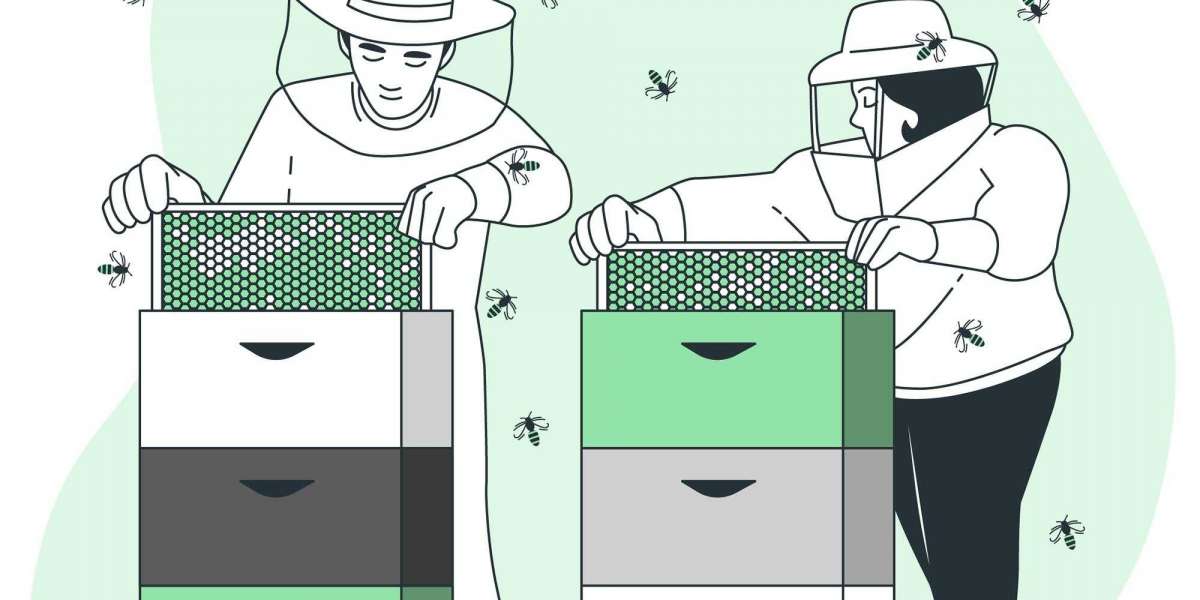Introduction
In recent years, the importance of honey bees has become a global conversation. Bees not only produce honey, wax, and propolis, but they are also indispensable pollinators responsible for one-third of the food we eat. Unfortunately, bees are under threat due to habitat loss, climate change, pesticide use, and pests like ants. The advent of IoT Beehive Monitoring Systems offers modern solutions to ancient beekeeping challenges.
Whether you are an experienced beekeeper or a concerned citizen, this guide dives deep into modern methods of beekeeping, tips to keep ants out of the beehive, and ways non-beekeepers can help save bees.
The Role of IoT in Beehive Monitoring
What Is an IoT Beehive Monitoring System?
An IoT (Internet of Things) Beehive Monitoring System is a smart technology setup that uses sensors, data analytics, and cloud storage to monitor the health and status of beehives in real-time. It tracks key indicators like:
- Temperature and humidity inside the hive
- Hive weight (to monitor honey production)
- Bee activity and movement
- Sound/vibration levels (to detect swarming)
- Intrusions by pests (like ants or mites)
These systems alert beekeepers instantly if something goes wrong, allowing for timely intervention and reducing the risk of colony collapse.
Benefits of IoT Beehive Monitoring
- Remote Monitoring: View hive data from a smartphone or computer.
- Data-Driven Decisions: Predict swarming, food shortage, or disease outbreaks.
- Early Pest Detection: Alerts help control threats like ants before damage escalates.
- Improved Hive Productivity: Maintains optimal conditions for honey production.
Methods of Beekeeping: Traditional vs. Smart Beekeeping
Beekeeping, also called apiculture, varies from traditional hands-on approaches to modern, tech-driven techniques. Here's a comparison of different methods of beekeeping:
1. Traditional Beekeeping
- Langstroth Hive System: Popular for its removable frame structure.
- Top-Bar Hive: Simpler but offers less honey production.
- Natural Beekeeping: Focuses on minimal interference and no synthetic inputs.
- Challenges: Labor-intensive, difficult to track hive health accurately, higher risk of colony loss due to late detection of issues.
2. Smart Beekeeping with IoT
- Uses real-time sensors and AI for monitoring.
- Predictive maintenance helps prevent losses.
- Integration with weather data improves hive planning.
- Increases honey yield and improves bee health.
3. Urban and Rooftop Beekeeping
- Becoming popular in cities like New York, Paris, and Bangalore.
- Often integrated with IoT for easier monitoring in limited spaces.
- Supports local ecosystems and promotes pollination in urban areas.
Effective Tips to Keep Ants Out of the Beehive
Ant infestations are one of the most frustrating problems in beekeeping. They steal honey, attack weak colonies, and may even drive bees away. Here are effective tips to keep ants out of your beehive:
1. Use Ant Moats
- Place hive legs in containers filled with water or vegetable oil.
- Acts as a physical barrier ants cannot cross.
- Some beekeepers use cinnamon or peppermint oil around moats for extra repulsion.
2. Apply Tanglefoot or Sticky Barriers
- Wrap a band of plastic or foil around each hive leg.
- Apply Tanglefoot (a sticky substance) to trap ants climbing up.
- Make sure it’s reapplied periodically to maintain effectiveness.
3. Maintain a Clean Hive Area
- Remove dead bees, spilled honey, and food scraps.
- Avoid sugary substances near the hive.
- Prune nearby vegetation to prevent "ant bridges" from reaching the hive.
4. Use Ant-Repelling Plants
- Plant mint, lavender, or basil near hives.
- These naturally repel ants and enhance the pollination area for bees.
5. Diatomaceous Earth (DE)
- Sprinkle DE around the base of the hive.
- It dehydrates and kills ants on contact but is safe for bees when used carefully.
6. Elevate the Hive
- Keeping hives off the ground reduces access for crawling pests.
- Combine elevation with moats or sticky traps for double protection.
Tips That Non-Beekeepers Should Follow to Save Bees
You don’t need to be a beekeeper to make a difference. Here are simple and impactful ways non-beekeepers can help save bees:
1. Plant Bee-Friendly Flowers
- Choose native wildflowers, herbs, and flowering vegetables.
- Examples: sunflowers, lavender, thyme, echinacea, borage, marigolds.
- Ensure blooming across all seasons for continuous nectar supply.
2. Avoid Pesticides and Herbicides
- Chemicals like neonicotinoids are lethal to bees.
- Use organic, bee-friendly alternatives in your garden.
3. Provide Clean Water
- Place shallow bowls or trays of water with floating corks or stones for bees to land on.
- Bees need water for hydration and cooling the hive.
4. Support Local Beekeepers
- Buy local, raw honey and bee products.
- Encourage sustainable beekeeping practices in your community.
5. Create Bee Hotels
- Drill holes in untreated wood blocks or bamboo sticks to attract solitary bees like mason bees.
- Hang them in shaded, dry areas of your garden.
6. Raise Awareness
- Educate others through social media or community events.
- Volunteer with conservation organizations or participate in citizen science projects.
The Future of Beekeeping with Smart Technology
The convergence of environmental concern and innovation is paving the way for smarter, sustainable beekeeping. IoT Beehive Monitoring Systems not only protect bees but also empower beekeepers with real-time insights. As the tech becomes more accessible, even small-scale or hobbyist beekeepers can adopt it to boost productivity and hive health.
Additionally, collaborative platforms are being developed to share hive data across regions helping researchers understand bee behavior and environmental impact better than ever before.
Conclusion
As we face growing ecological challenges, modern beekeeping methods powered by IoT technology offer a sustainable, data-driven path forward. From deterring pests like ants to involving non-beekeepers in bee conservation, every effort counts. Whether you're a beekeeper, a tech enthusiast, or just a nature lover, there’s a role for you in protecting our pollinators.








